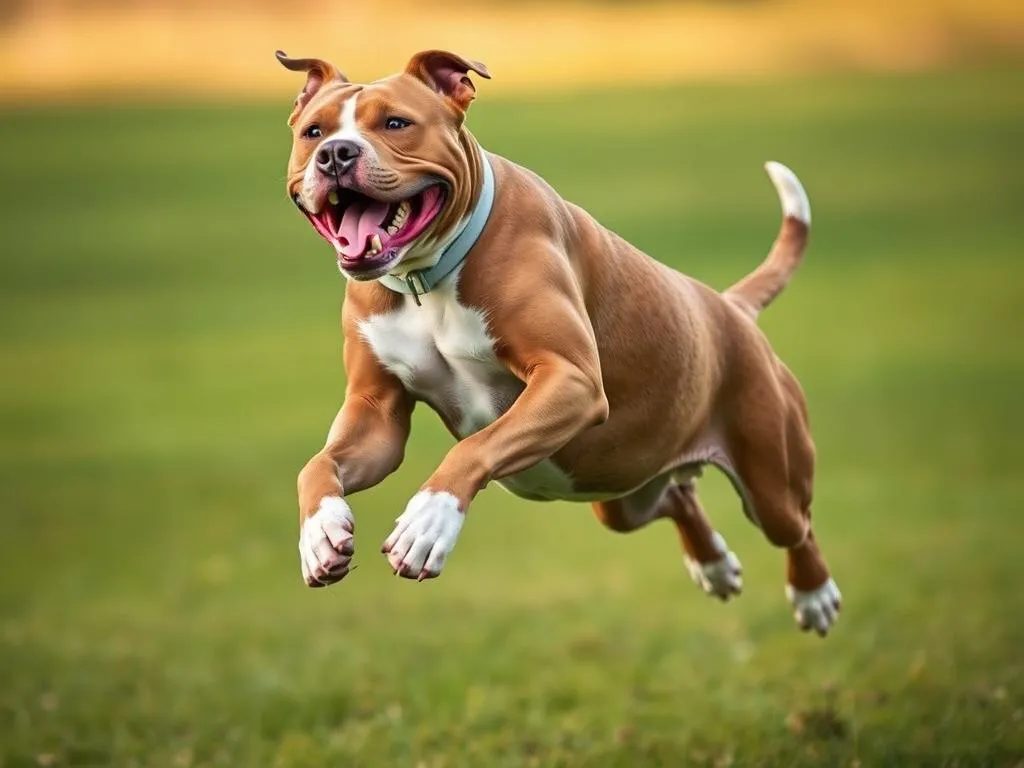
Understanding how high pitbulls can jump is not just a matter of curiosity; it’s essential for responsible pet ownership and training. These dogs are known for their muscular build and impressive agility, which can often lead to surprising feats of jumping ability. In this article, we will delve into the world of pitbulls, exploring their history, physical attributes, and the science behind their jumping capabilities. We will also provide insights on training techniques and health considerations to ensure your furry friend can leap safely and effectively.
Understanding Pitbulls
History and Background
Pitbulls are a group of dog breeds that include the American Pit Bull Terrier, American Staffordshire Terrier, and Staffordshire Bull Terrier. Originating in England in the 19th century, they were initially bred for bull-baiting and later as farm dogs. Over the years, they have gained a reputation as loyal and affectionate companions, often misunderstood due to their strong physique and history.
Common characteristics of pitbulls include their muscular build, strong jaws, and high energy levels. They are known for their intelligence and eagerness to please, making them highly trainable. However, their physical strength requires responsible ownership and training.
Physical Attributes
On average, pitbulls stand between 18 to 21 inches tall and weigh between 30 to 85 pounds, depending on the specific breed. Their muscular structure, including well-defined legs and a broad chest, contributes to their jumping ability. When it comes to agility, pitbulls are exceptional, allowing them to perform impressive jumps.
The Science of Jumping
Anatomy of a Dog’s Jump
Jumping is a complex action that relies on various muscle groups working in harmony. The primary muscles involved include the quadriceps, hamstrings, and calf muscles. A dog’s flexibility and coordination play critical roles in achieving high jumps. The more flexible a dog is, the better it can harness its muscle power to propel itself upward.
Factors Influencing Jumping Ability
Several factors can influence how high a pitbull can jump, including:
- Age and Health Considerations: Younger dogs generally have more energy and agility. However, older dogs may have limitations due to health issues such as arthritis.
- Training and Exercise: Regular exercise and proper training can significantly enhance a dog’s jumping ability.
- Weight and Size: A pitbull’s weight and size can affect its jumping height. Lighter dogs often jump higher, but muscle density and strength also play a critical role.
How High Can Pitbulls Jump?
Average Jumping Height
On average, pitbulls can jump between 3 to 5 feet. However, this can vary significantly based on individual dog characteristics and training. Comparatively, other breeds, such as Greyhounds, can jump higher due to their unique physical attributes.
Record Jumping Heights
There have been notable examples of pitbulls achieving exceptional jumping heights. Some trained dogs can clear fences of up to 6 feet or more. Factors contributing to such high jumps include rigorous training, optimal physical condition, and sometimes, sheer motivation from a toy or treat.
Training Your Pitbull to Jump Higher
Basic Training Techniques
Jump training can be enjoyable for both the dog and the owner. Start with basic exercises that introduce your pitbull to jumping safely.
- Use Low Obstacles: Begin with low jumps, such as small hurdles or cones.
- Positive Reinforcement: Reward your dog with treats or praise every time they successfully jump over an obstacle.
Advanced Jump Training
Once your pitbull is comfortable with basic jumps, you can move on to advanced training techniques.
- Increase Jump Height Gradually: Slowly raise the height of the obstacles as your dog becomes more confident.
- Incorporate Agility Courses: Set up an agility course that includes various jumps, tunnels, and other obstacles to enhance their skills.
Always keep safety in mind during training sessions. Ensure that the jumping exercises are appropriate for your dog’s age and physical condition.
Health and Safety Considerations
Risks of Jumping
While jumping can be a fun and beneficial activity, it is crucial to be aware of potential risks. Common injuries associated with jumping include:
- Sprains and Strains: Overexertion can lead to muscle strains or ligament injuries.
- Joint Issues: Repeated high-impact jumping can contribute to joint problems, especially in older dogs.
Signs of overexertion include limping, reluctance to jump, or excessive panting. If you notice any of these signs, it’s essential to allow your dog to rest and consult with a veterinarian if necessary.
Maintaining a Healthy Lifestyle
To keep your pitbull in peak jumping condition, maintaining a healthy lifestyle is vital. Regular veterinary check-ups can help catch potential health issues early.
Nutrition also plays a critical role in your dog’s overall fitness. A balanced diet rich in protein, healthy fats, and essential vitamins will support their muscle development and energy levels. Additionally, incorporating regular exercise into their routine will keep them physically fit and agile.
Frequently Asked Questions (FAQs)
How do pitbulls compare to other breeds in jumping?
Pitbulls are known for their strong physique and agility, allowing them to jump impressively. While they may not jump as high as breeds specifically bred for speed, such as Greyhounds, they are quite capable compared to many other breeds.
Can all pitbulls jump high?
Not all pitbulls can jump high. Individual abilities can vary based on age, health, and training. A well-conditioned and trained pitbull can achieve remarkable heights.
What is the best age to start jumping training?
The best age to start jumping training is typically around 6 to 12 months, once your pitbull has developed enough physical strength and coordination. However, always consider their individual health and development.
How can you ensure your pitbull’s safety while jumping?
To ensure safety, provide proper training, start with low jumps, and gradually increase the height. Monitor your dog for signs of fatigue or discomfort, and always consult with a veterinarian if you have concerns about their health or jumping ability.
Conclusion
Understanding how high pitbulls can jump is essential for any owner looking to engage in training and exercise with their furry friends. By recognizing their physical capabilities and potential risks, you can create a safe and enjoyable environment for jumping activities. Proper training, along with a commitment to maintaining a healthy lifestyle, will not only enhance your pitbull’s jumping abilities but also strengthen the bond between you and your beloved pet. Remember, responsible ownership and training practices lead to happy, healthy dogs able to reach new heights.









